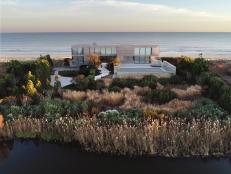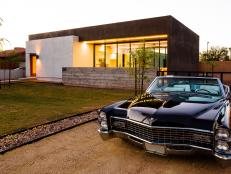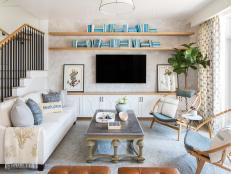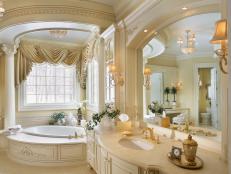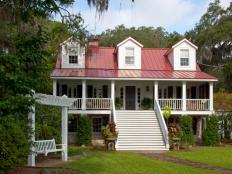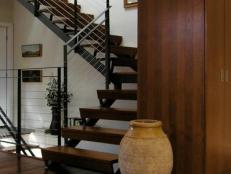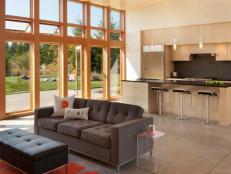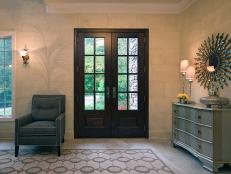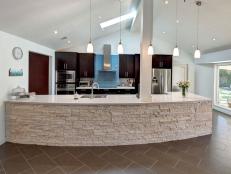Coastal Home Designed to Embrace Its Natural Surroundings
This landscape design, by LaGuardia Design Group, was selected as the overall winner of the 2021 HGTV Ultimate Outdoor Awards — and it's easy to see why. Designers were tasked with working with the site after Hurricane Sandy, and wanted to do everything possible to create a sustainable and conscious design. Though this was a daunting task, the designers prevailed and created an absolutely stunning landscape, giving testimony to their immense tenacity and commitment to preserve and appreciate our natural surroundings.


Anthony Crisafulli, Stelle Lomont Rouhani Architects, Julie Hillman Design, Seascape Partners, Renner Landscaping, Orsman Design, Inter-Science Research Associates, Southampton Engineering
What were your main objectives?
Our client came to us looking for a luxury experience, but wanted to be sensitive to honoring the natural beauty of the site. After all, this is why they purchased the property in the first place. The main design program included a ‘wow factor’ pool, dedicated areas for pool side lounging, dining, socializing and just appreciating the ocean and pond views that enveloped the home. There was an emphasis on using materials that echoed the natural context and reflected the high level of design of the house. So, plantings needed to be lush and tailored, but also cohesive with the native surroundings.
What did the landscape look like before?
We inherited a post-Hurricane Sandy site, which meant this oceanfront property was devastated by storm damage, buried in debris and sand. The project was literally a ‘ground up’ reconstruction of house and site. I remember walking the beach after the storm and seeing houses hanging off the edge of the dune, ready to fall into the sea. This house was no different. Had we not just secured permits for the construction, it was at risk of being condemned.
Luckily, we were in a position to come in and create a new, more resilient design. The architect lifted the house into the air to avoid future wave action. In response, we raised the grades to meet the new elevated home through a major dune reconstruction effort. Thousands of yards of sand were brought in and sculpted to anchor the house into the land. Many people can’t believe that the dune is completely manmade.
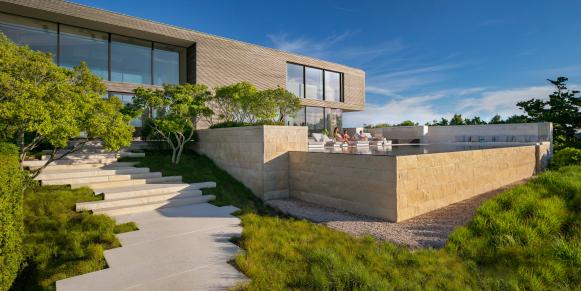
Anthony Crisafulli, Stelle Lomont Rouhani Architects, Julie Hillman Design, Seascape Partners, Renner Landscaping, Orsman Design, Inter-Science Research Associates, Southampton Engineering
Capitalizing on the new change in grade, we carved a raised pool terrace into the land and expressed the edge with a limestone waterfall wall. The pool water appears to cascade over the stone and into the pond. Again, we used that sandy colored limestone to draw the feeling of the beach up to the house. Solid stone steps were embedded into the earth, to create a sinuous landscape staircase that weaves in and out of a native grove of shade trees. The result is the feeling that the house emerges from the understory to reveal dramatic ocean views.
At the end of the day, we completely overhauled the site, but rather than impose a new artificial landscape onto it, we elected to look outward to the surrounding context. We pulled on the ‘threads’ of that native fabric and wove them together to lock the site into its environmental context. In the end it really does feel like the design emerges from the land, locking it in physically and aesthetically.
What was your biggest obstacle?
There’s no question that the environmental regulations were the most challenging aspect of this design. The house is bordered by coastal wetlands to the south, and freshwater pond wetlands to the north. Amazingly, when you map the setbacks for these two bodies of water, only a fraction of the site can even be developed with structures. The rest had to be preserved or restored as native wetland buffer habitat.
Luckily the client embraced a natural landscape, and really identified with that aspect of our firm’s portfolio. We had early conversations about how the use of native plant types should be viewed as an opportunity and not a constraint.
We undertook significant cost and effort to restore dunes that had been lost to storm action. The client saw from the start how this would become both a means of protecting the house, but also a layer of the landscape that would enrich the overall design.
An often-overlooked aspect of both of these efforts is how these re-established buffers serve to restore and protect the bodies of water. With a revitalized dune between the ocean and the pond, breach is less likely to happen, ensuring that the natural balance between these two water bodies is maintained. The planted pond buffer also acts as a bio-filter that slows and processes runoff before it reaches the pond, helping to improve the water quality and quell the presence of invasive phragmites along that shoreline.
What is your favorite feature, element or detail?

Anthony Crisafulli, Stelle Lomont Rouhani Architects, Julie Hillman Design, Seascape Partners, Renner Landscaping, Orsman Design, Inter-Science Research Associates, Southampton Engineering
My vote would definitely be the sunken fire feature at the pool. This element was added after the initial construction, but it feels so integrated into the hardscape and pool design. I love the way the seating appears to rise out of the pool, as if it’s a bluff face on the ocean coastline.
This space is extremely dynamic, serving a number of functions for the property owner. During the day it acts as an informal dining space, focused on the pond and protected from the strong ocean winds. Umbrellas can be added to custom sleeves when the sun is high and hot, making sure there is a shady spot to sit and cool off. After the sun goes down, recessed ethanol fire trays can be opened up to convert this into an early evening cocktail area. The sounds of the pool waterfall wall animate the space, as the stars and moonlight reflect on the surface of the pond.
It's tough to compete with the power and beauty of the oceanside of this home, but this little lounge area is my under-the-radar favorite spot on the property.
How important was sustainability to your design?
In our firm, we like to say that development creates opportunity.
You can take that to mean any number of things, but since so many of our project sites have some sort of environmental component, I like to think that the opportunity is to restore and connect to some aspect of the site’s environmental context.
I think everyone can acknowledge that it’s important to protect the natural features of a site. Often times these features are why our clients choose the properties that they do.
Actually following through on that can be more complicated, though. There is a butterfly effect to every design move. If you cut down a tree, it can cause unanticipated erosion, habitat displacement/destruction, changes in wind and solar patterns – the list goes on.
It may also require the need for something new to replace that tree. That might be a new tree from out of state. It could be a piece of hardscape from another country. This means those things have to be shipped to the site, creating a draw on resources, and potential disturbance in areas we can’t even calculate.
It's inevitable that some eggs will be broken in creating a new development, but we strive to preserve whenever possible, and to specify locally sourced building and plant materials for our projects.
Not only does this help limit our carbon footprint, but it ensures that our designs feel ‘of the place’.
Similarly, we developed a robust freshwater buffer on the pond side of the house filled with a diverse mix of native trees, shrubs and grasses.
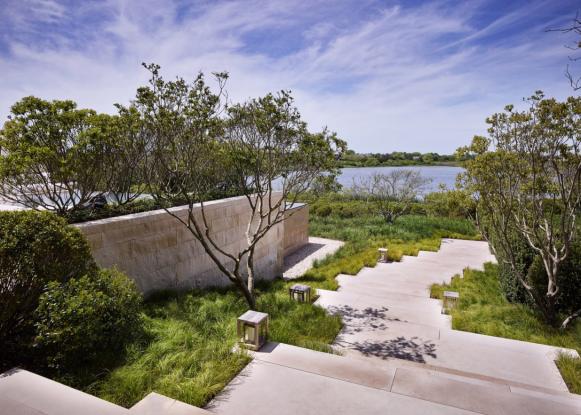
Anthony Crisafulli, Stelle Lomont Rouhani Architects, Julie Hillman Design, Seascape Partners, Renner Landscaping, Orsman Design, Inter-Science Research Associates, Southampton Engineering
The materials we use speak to the beige color of the sand, the deep blues of the ocean, or the natural silvers found on our native shad forests. These decisions ensure that our clients' projects embrace the natural beauty that resonated with them when they decided to make a home on these sites.
That adds a value beyond the environmental and economical. That value is personal and cultural, which you cannot quantify with metrics. You have to feel it.
How did you integrate this home into its natural surroundings?
Simply, we stopped moving for more than a second, took a deep breath and looked around. The answer was already there.
I could work for 100 years and never come close to designing something as inspiring as this ocean landscape.
There were countless days that I sat onsite and watched a giant heron perch itself on a willow branch and look for fish in the pond.
The vibrant red color of the winterberry along the pond edge in December, the brush strokes of white on the shadblow that line the site in early spring, the light blue color of the sky reflected on the pond during a clam day.
A dynamic and ever-changing landscape was providing inspiration all around us.
At the end of the day, all we had to do was look around and embrace it.






